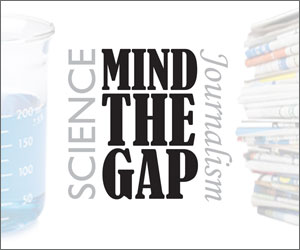I’m Just Mad About Saffron….
by
 And saffron’s mad about cancer. That’s right, the mellow yellow spice famous for its golden yellow color and earthy flavor has been shown to halt liver cancer progression in mice.
And saffron’s mad about cancer. That’s right, the mellow yellow spice famous for its golden yellow color and earthy flavor has been shown to halt liver cancer progression in mice.
The recent study, published in the September issue of Hepatology, set out to test whether different doses of saffron could impact liver cancer. Using a well-established mouse mode for the disease (diethylnitrosamine and 2-acetylaminofluorene administration) the authors showed that at the highest dose of saffron mice showed no evidence of tumor formation, whereas 75% of the control mice developed liver nodules.
Amr Amin and his pals at the United Arab Emirates University in Al-Ain took a closer look at the molecular biology underlying this dramatic effect and found that saffron was preventing a cell proliferation gene, Ki-67, from going haywire. In addition, they noticed an increase in superoxide dismutase expression, an antioxidant enzyme responsible for neutralizing the reactive oxygen species superoxide. These observations fit nicely with previously known data regarding the detrimental effects of elevated Ki-67 and oxidative stress in cancer.
Cool! A cure for cancer?

Crocus sativus. Note the thin cures for cancer in red.
Probably not. Saffron is easily the most expensive spice on the market (around $73 an ounce) and as such doesn’t represent a viable treatment option. It’s also not all that easy to produce (which obviously contributes to the high price) as the crocus plant that develops these bright red stigma, Crocus sativus, is an artificially bred triploid cultivar that struggles with meiosis. What??? Basically it is a sterile plant, and as such the only way the plant can be farmed is through manual separation and replanting of its corms (bulb-like roots).
But what if we could artificially engineer the specific compound in saffron that is effective at halting tumor growth?
Yeah… that’s probably going to be tricky. First of all, saffron is a complex mixture of over 150 volatile compounds that give it its unique flavor and aroma, as well a bunch of non-volatiles, such as bright red crocins and carotenoids. Teasing apart which of these, or even more daunting, which combination of these, gives the desired anti-cancer effect will be no small feat.
But, plants have long been a lucrative source of lead compounds in drug development. Some notable examples include the derivation of local anesthetics from cocaine, and the cancer treatment paclitaxel (Taxol) from the Yew tree. In fact, ethnobotanists (researchers focused on understanding cultural relationships between plants and human beings) often specialize in finding and analyzing plants that have been used medicinally for centuries.
It’s not obvious to me how high the saffron dose had to be to have this cancer-protective effect in mice, or if there were any adverse side effects (a yellowing of the fur, perhaps). However, Amin et al plan on testing the spice in human liver cancer patients in the near future, so the dose/hair color effects can’t have been that serious.
.
Katie Pratt is a graduate student in Molecular Biology at Brown University. She has a passion for science communication, and in an attempt to bring hardcore biology and medicine to everyone, she blogs jargon-free at www.katiephd.com. Follow her escapades in the lab and online on Twitter.
.
.
Be the first one to mind the gap by filling in the missing word as a comment and get your name in the blog along with a sweet new BenchFly mug!
 UPDATE: Congratulations to T. Srinath – our first two-time Mind the Gap champion!
UPDATE: Congratulations to T. Srinath – our first two-time Mind the Gap champion!
About the winner: Thiruneelakantan Srinath, PhD, is a Postdoctoral fellow at Department of Microbiology and Cell Biology, Indian Institute of Science, Bangalore, India. He enjoys bench work, trekking and his motto is ‘Challenging my own limits’.
.
About the prize: In addition to fame and glory beyond their wildest dreams, winners receive our new hot-off-the-presses large (15 oz) BenchFly mug to help quench their unending thirst for scientific knowledge… or coffee.
.

.
Miss a previous edition of Mind the Gap? Shame on you! Don’t worry – we’ve got you covered:
Sweet Relief: How Sugar May Help Reverse Climate Change
Laughter Really is the Best Medicine
All Work and No Play Makes Katie RSI Prone
Sexual Identity and Autocrine Stimulation: Oh, To Be Teenage Yeast
On Wine, Sunburns and the Tendency of Headlines to Mislead
Which Came First: The Opossum or the Snake?
Pigeons Know a Crazy Woman When they See One
To Boldly Go Where No Worm Has Gone Before
Another One Bites the Dust: Rinderpest Eradicated
Scientists Just Wanna Have Fun (Like Uncaged Monkeys)
Mosquitoes Eating You Alive? Cheesy Feet Could be the Problem
Dirty Mouth? Clean it Up with Cancer Screening
Because in Space…It’s Always 5 O’Clock Somewhere
Curry: Now Good for Detecting Explosions, Not Just Causing Them
So You Thought Eating Poop Was Bad For You?
Are Fatty Acids the Cure for PMS?
Botanical Sleuthing Recovered Endangered Daisy
.
.
.




Ruben C
wrote on October 13, 2011 at 2:20 pm
TNFα Receptor
Ruben C
wrote on October 13, 2011 at 2:22 pm
nuclear factor-kappa B p-65 – maybe this one is the right one
T. Srinath
wrote on October 13, 2011 at 2:25 pm
Cell proliferation gene kept under check by saffron is Ki-67.
alan@benchfly
wrote on October 13, 2011 at 2:28 pm
That's it- we've got a winner!
T. Srinath
wrote on October 13, 2011 at 2:34 pm
wow! joined in little late but still got it right!!! I am elated.